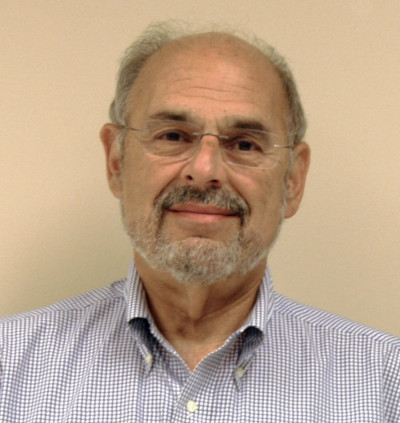Robert L. Dickman
(Contributed by Kenneth I. Kellermann)
 Robert L. Dickman, 2013 (Credit: NRAO/AUI/NSF)
Robert L. Dickman, 2013 (Credit: NRAO/AUI/NSF)
Robert L. Dickman was born 16 May 1947 in Brooklyn, New York and died 16 December 2024. He received his undergraduate and graduate degrees from Columbia University, and earned his PhD in 1976 working under Pat Thaddeus with a thesis on "The Ratio of Carbon-Monoxide to Molecular Hydrogen in Interstellar Dark Clouds." Following a post-doctoral appointment at Rensselaer Polytechnic Institute and two years at The Aerospace Corporation, Bob spent 11 years on the faculty of University of Massachusetts where he was a Research Associate, Professor and Manager of the Five Colleges Radio Astronomy Observatory. During this time, Bob also held a concurrent appointment as a Visiting Associate Professor at Wesleyan College where he taught courses on galactic astronomy. In 1975, Bob married Ineke. They had two children, Josh and Ilana.
From 1991 through 2007, Bob held key positions in the National Science Foundation's Astronomy Division, including Program Manager for the Arecibo Observatory, then as Coordinator of the Radio Astronomy Facilities, where he oversaw NSF's entire radio astronomy portfolio. He then became the ALMA Staff Associate, where he played a crucial role in the funding and development of what was the largest and most expensive ground based astronomy project ever built. He served on the international (NSF, ESO, Japan, and Chile) ALMA Board for five years and was its Chair from 2005-2006. Bob was especially proud of his role in enabling the successful completion of ALMA as what he described as "the most ambitious radio observatory on Earth." In 2009-2010 he chaired the International and Public-Private Partnership Study Group for the Astro-2010 Decadal Survey.
In 2002, Bob was one of eight NSF scientists to participate in the new State Department Embassy Fellows Program. As an Embassy Fellow in Santiago, Chile, Bob examined the Chilean IT "bottlenecks" where he noted, "Despite Chile's excellent internal IT network, it can be hard to move astronomy data in and out of the country." Bob later described his experience as "a wonderful confluence of events because ALMA activities were becoming pretty intense. I got to do two jobs while I was there."
Bob joined National Radio Astronomy Observatory (NRAO) in 2007 as a Scientist and Assistant Director for New Mexico Operations, where he oversaw the operation of the VLA and VLBA. He later moved to Charlottesville as Head of the NRAO New Initiatives Office, and in 2014 he became Director of NRAO's Central Development Laboratory. Bob retired in 2019 as an NRAO Emeritus Scientist.
Bob was a member of the American Astronomical Society, the American Physical Society, and the International Astronomical Union. He was a skilled photographer and enthusiastically shared his nature photographs with family and friends. He delighted in exploring the intricacies of General Relativity and the feasibility of alternative models of gravity. From an early age he loved music, was an excellent pianist, and while in Charlottesville, he sang in the Oratorio Society of Virginia. He was the coauthor with Paul Vanden Bout and Adele Plunkett of the 2023 book The Alma Telescope: The Story of a Science Mega-Project (Cambridge University Press).
Bob will be remembered by his friends and colleagues for his mischievous sense of humor and his long lasting contributions to radio astronomy resulting from his research on interstellar molecular clouds, and for the skills and understanding that he brought to dealing with complex institutional, national, and international science management programs.
![[IAU logo]](iau_wb_thumb.jpg)
![[URSI logo]](URSI-logo-thumb.jpg)
![[Karl Jansky at his antenna]](jansky_photo_02_thumb.jpg)
![[Reber's Wheaton antenna]](Reber_Telescope_Wheaton_thumb.jpg)
![[Dover Heights]](Dover_Heights_02_thumb.jpg)
![[4C telescope]](GB61-195_4C_telescope_thumb.jpg)
![[Ewen and horn antenna]](ewen_horn1s.jpg)
![[Dwingeloo, 1956]](Dwingeloo-1956-thumb.jpg)
![[Jocelyn Bell Burnell and Cambridge antenna used in pulsar discovery]](burnell2_thumb.jpg)
![[Lovell Telescope at Jodrell Bank]](site_1594_0001-500-334-20180316163019-thumb150.jpg)
![[Wilson, Penzias, and Bell Labs horn antenna]](wilson-penzias-horn_thumb.jpg)
![[6-m Millimeter Radio Telescope in Mitaka, Japan]](6m-thumb.jpg)

